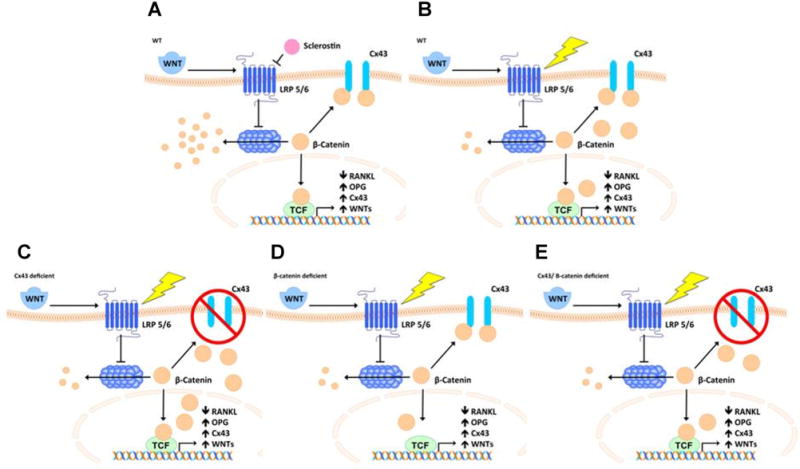Fig. 1.

Proposed mechanism by which osteocytic Cx43, via β-catenin, regulates both bone formation and resorption in response to load. (A) WT osteocytic Cx43 binds β-catenin, decreasing its nuclear translocation. (B) Load (lightning bolt) in WT decreases sclerostin, thus increasing β-catenin, but this is governed by Cx43 functioning in a negative feedback loop. (C) In Cx43-deficient osteocytes, load-induced increases in β-catenin are amplified, resulting in further increase in expression of osteogenic genes, possibly WNTs, and decreased RANKL expression. (D) In β-catenin (heterozygous)-deficient osteocytes, β-catenin levels drop below the threshold needed for anabolic response to load. (E) In Cx43/β-catenin-deficient osteocytes, more β-catenin is made available, resulting in a modest, relative to Cx43-deficient, anabolic response to load.
